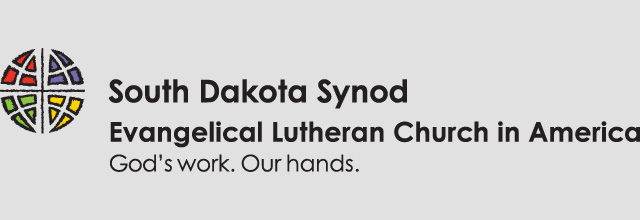Repeal of S8.51.10, which reads, “The Bishop may be elected to no more than two consecutive terms and shall serve until a successor assumes office.”
Who proposed this recommendation?
At the fall 2017 meeting of the Synod Council, the council passed a resolution recommending the repeal of S8.51.10, dealing with term limits, to the 2018 Synod Assembly. This recommendation comes after a lengthy discernment of the council, in which neither the bishop, nor synod staff were present for the final discussion and vote.
Why is the Synod Council proposing the amendment?
The underlying argument from the Synod Council is that the office of bishop is by the call of the Holy Spirit. In the ELCA we understand the nature of call to be the discernment of an individual, alongside the discernment process of the calling body. Prayerful consideration is necessary on both parties. Since each bishop election, regardless of an incumbent bishop, is a time for discerning the needs of the synod and listening to the movement of the Holy Spirit it is unnecessary to place arbitrary limitations on the process. Were a bishop in their second term to discern a call to continue as bishop, the Synod Assembly as the calling body, would be precluded from considering them. Bylaw S8.51.10, limiting terms of bishop, fails to adequately consider the nature of call in our tradition and needlessly places limitations on the authority of the Synod Assembly as the highest legislative body in the synod.
The Synod Council discussed term limits for all of the synod officers, why is only a change to the office of bishop being proposed?
The office of bishop is a call to ministry which is rather distinct from the other elected offices. While all serve the synod, the bishop is a call of the church and is for full time ministry. To illustrate the point, a pastor under call to a congregation may be elected as synod secretary or treasurer without resigning as pastor of their congregation.
How does this affect the upcoming election process?
If the proposed amendment were to pass it would take effect immediately. Meaning, Bishop David Zellmer would be eligible for another term.
How long has the South Dakota Synod had term limits?
Term limits were put in place at the time the South Dakota Synod was constituted in 1988 as a member of the ELCA.
How many synods have term limits?
Of the 65 synods in the ELCA, 17 synods have a 2-term limit and three synods have a 3-term limit. The remaining 45 synods have no term limit for bishop.
What about the synods around us?
Of the synods that share borders with the South Dakota Synod, the Eastern North Dakota Synod, Western North Dakota Synod, and the Western Iowa Synod have a two-term limit. The Northwestern Minnesota Synod, Southwestern Minnesota Synod, Nebraska Synod, Rocky Mountain Synod, and Montana Synod place no limits on the number of terms for bishop. There are no term limits for the Presiding Bishop of the ELCA.
Who started the process?
The question of term limits has been raised at various points in the history of the South Dakota Synod. Former Bishop Andrea DeGroot-Nesdahl, for example, raised the issue during the 2013 Bishop Election. When asked what she would change in the Synod, she stated that she would advocate for the removal of term limits.” Bishop DeGroot-Nesdal had previously served two terms as bishop of the South Dakota Synod and was ineligible for re-election to a third consecutive term. More recently, a constitution review task force raised the issue as one place whre the governing documents of the South Dakota Synod diverge from the model constitution for Synods of the ELCA. The task force made no recommendation, but sent the matter to the Synod Council for consideration.
Where are term limits stated?
Term limits for the office of bishop are stated in the bylaw provision S8.51.10.
How long is a term?
The bishop is elected to a six year term.
Who has the authority to amend the bylaws?
Within the synod, only the Synod Assembly has the authority to amend the bylaws. Two-thirds of votes cast is required to amend the bylaws, and prior notice need not be given.
Process for Electing a Bishop
What is the process for electing a bishop?
The process which will culminate in the election of a bishop at the 2019 Synod Assembly has already begun. A Synod Study Committee was appointed by the Synod Council at the Fall 2017 meeting. A Bishop Election Committee will be appointed in October of 2018. Much like a call committee in a congregation, these committees will guide the discernment of the synod.
The Synod Council will be responsible for conducting a synod study, with the results to be made available at least six months prior to the Synod Assembly at which a bishop election will take place.
An incumbent bishop shall inform the Synod Council, no later than the fall meeting prior to a bishop election year, if they will be available for re-election.
At the conference assemblies of a bishop election year (Spring 2019), voting members will engage the synod study material and be invited to identify ministers of Word and Sacrament who have the desired and necessary gifts for the office of bishop. Names lifted up at this time shall be sent to the Bishop Election Committee who will contact potential candidates to obtain biographical information. This information will be made available on the synod web site prior to the Synod Assembly. A minister of Word and Sacrament who is lifted up at the conference assembly will still need to be nominated on the Ecclesiastical ballot to be considered a candidate for bishop.
What is an Ecclesiastical ballot?
Also known as a nominating ballot, an Ecclesiastical ballot is a means by which nominations for the office of bishop are made by casting a vote. On the first ballot, any minister of Word and Sacrament on the roster of the Evangelical Lutheran Church in America is eligible (except, as the bylaws currently state, the sitting bishop of the South Dakota Synod who is in their second term). On the nominating ballot, three-fourths of legal votes cast is needed for election. If no election occurs, the second ballot consists of all of those nominated, minus pastors who remove their name from consideration. On the second ballot, three-fourths of votes cast is needed for election.
After the nominating ballot, the election process shall follow the steps outlined in S9.04.B17.
What process was used following the August 17, 2017, Synod Council meeting to discuss this issue with congregation members and pastors? (added 03/02/18)
No motion or formal action was taken by the Synod Council at the August 17, 2017, meeting. Council members discussed officer term limits and requested further time to think about the topic. It was suggested that Synod Council members have informal discussions with others, as they felt appropriate. Since no action was taken at the August 2017 meeting, a formal process and documents were not developed for these talks. The perspectives learned through these unstructured conversations were shared during the discussion and action at the October 6, 2017, meeting.
Why weren’t the background and rationale and Q&A documents published after the action at the October 6, 2017, Synod Council meeting? (added 03/02/18)
Executive Committee members felt this topic and information would best be shared by a member of Synod Council with lay and clergy members in a face-to-face format so interactive discussion could occur. Spring conference assemblies are the first scheduled meetings with lay and clergy after October 2017.
It would have been helpful to have the background and rationale and Q&A documents earlier so this topic could be discussed during congregational annual meetings. (added 03/02/18)
Pastors and congregation members are encouraged to discuss this topic at congregational council or other meetings between now and the June 2018 South Dakota Synod Assembly.
2018 Synod Assembly Resolution Bishop Term Limits, Background and Rationale
Questions may be directed to:
Carla Borchardt
Vice President, South Dakota Synod
(605) 759-8504
Or
the Rev. Jonathan Vehar
Secretary, South Dakota Synod
pastorjonathan@peacelutheran.com
(605) 361-3683
Revised 02/22/2018
Revised 03/02/2018

